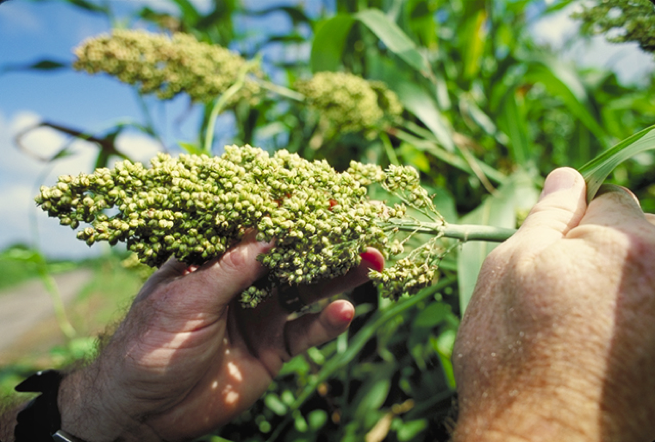
Funded by a grant from the Department of Energy’s Advanced Research Projects Agency-Energy program (ARPA-E), Near Earth Autonomy is trying to accelerate the process of phenotyping sorghum plants in the field, which is traditionally completed using plant breeders who manually survey the crop. These breeders are looking for the proverbial needle in the haystack — a single plant capable of exceptional growth in a 10-acre crop of mixed growth plants. Near Earth Autonomy has developed a drone-powered system that will significantly reduce the manpower and work hours needed to identify these super-strains of sorghum: a 25-pound autonomous helicopter that is programmed to interact with automated sensors in the field.
Each aerial drone in this project is equipped with a LIDAR unit, visible imaging gear, and cameras that can capture thermal, infrared, and hyperspectral images. The UAV-based system is capable of measuring plant characteristics such as height, stalk thickness, leaf angle, and more.
The Near Earth Autonomy smart drone will fly biweekly, collecting a large amount of data during the 20-minute trek across a 10-acre test plot of sorghum. When the analysis is complete, the drones will have collected enough data to build a 3D landscape of the crop. The model is detailed enough that scientists can study the physiology of the plants within the plot and identify the best growing individual plants in the field.
Researchers hope this technique will make it easier for sorghum growers to optimize their crop for biofuel production. Once farmers can identify the best growing strains, they can cultivate these individual seedling and maximize crop output. “The big picture goal is to get a big increase in the yield for this bioenergy sorghum,” says Near Earth Autonomy engineer Paul Bartlett. An increase in crop yield “could really make [sorghum] a sustainable bioenergy source.” Near Earth is working with Clemson University, Carnegie Mellon University, and the Donald Danforth Plant Science Center on this project.
Editors' Recommendations
- Apps that plant trees for you are booming. But are they actually helping?
- Military nano drones help soldiers map out the battlefield ahead
- This collision-proof drone helped explore the deepest ice cave in the world
- New Jersey cops use speaker-drones to help enforce pandemic lockdown
- How a puzzle game could help scientists find a coronavirus cure




